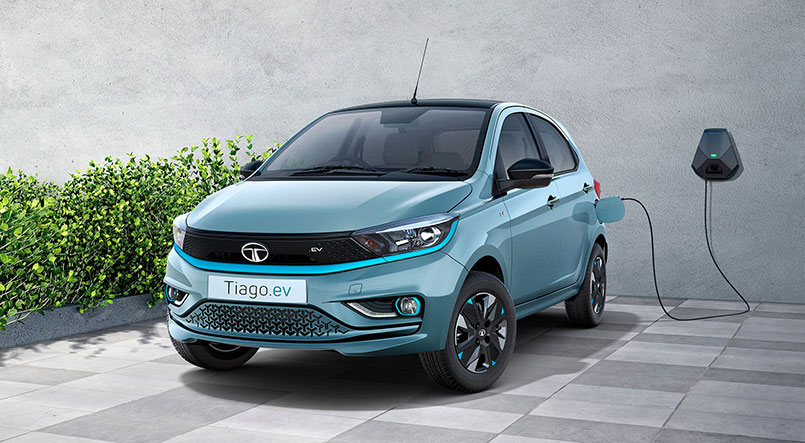As the electric vehicle (EV) revolution gains momentum, fleet management is emerging as a profitable business model in India. With government incentives and the global push towards sustainable mobility, businesses are increasingly investing in electric fleets for logistics, ride-hailing, and corporate transport. Managing these fleets efficiently, however, presents unique challenges and opportunities. This article explores the business potential of EV fleet management and how entrepreneurs can capitalize on this growing trend.
Why EV Fleet Management is Gaining Traction
The rise in fuel prices, stricter emission norms, and the growing emphasis on reducing carbon footprints are driving companies to switch to electric fleets. Government policies like the Faster Adoption and Manufacture of Hybrid and Electric Vehicles (FAME) scheme have further incentivized the transition. Fleet operators recognize that electric vehicles not only lower operational costs but also support sustainability goals, making EV fleet management a lucrative business model.
Key Components of EV Fleet Management
1. Vehicle Selection and Acquisition
Choosing the right vehicles for a fleet is crucial. Companies must assess factors such as range, battery capacity, and charging requirements. Depending on the intended use—ride-hailing, last-mile delivery, or employee transportation—the choice of electric cars, vans, or scooters may vary.
2. Charging Infrastructure
Setting up a robust charging network is essential for fleet efficiency. This includes installing fast chargers at depots, slow chargers at parking facilities, and potentially even portable chargers for emergencies. Partnering with charging station providers or setting up proprietary charging hubs ensures minimal downtime and operational continuity.
3. Fleet Management Software
Efficient management of electric fleets requires advanced software solutions. These platforms track real-time data, including vehicle location, battery status, charging schedules, and maintenance needs. Integrating telematics with fleet management systems helps optimize routes and monitor energy consumption, thereby enhancing productivity.
4. Maintenance and Battery Management
Electric vehicles have different maintenance requirements than traditional fuel-based cars. Regular monitoring of battery health, tire conditions, and brake systems is vital. Predictive maintenance, enabled by IoT sensors and data analytics, helps reduce unexpected breakdowns and extend vehicle life.
5. Data Analytics and Optimization
Data-driven insights are key to maximizing fleet efficiency. By analyzing usage patterns, charging habits, and route efficiency, managers can make informed decisions about vehicle deployment and maintenance schedules. Predictive analytics can also forecast battery degradation and recommend proactive interventions.
Benefits of EV Fleet Management
Cost Savings
Electric fleets reduce fuel expenses, and lower maintenance costs due to fewer moving parts make them economically viable. Additionally, government subsidies and tax incentives further reduce the financial burden of fleet electrification.
Environmental Impact
Reducing carbon emissions aligns with corporate sustainability goals. Companies can showcase their commitment to eco-friendly practices by operating electric fleets, which is increasingly important to consumers and stakeholders.
Enhanced Operational Efficiency
With automated tracking, predictive maintenance, and optimized routing, fleet managers can ensure maximum uptime and minimal disruptions. This efficiency translates to higher profitability and more reliable service.
Real-World Examples of Successful EV Fleets
1. BluSmart Mobility
India’s first all-electric ride-hailing service, BluSmart, operates a fleet of electric cabs in Delhi-NCR. Their model emphasizes zero-emission travel with no surge pricing, supported by a dedicated charging infrastructure.
2. Amazon India’s EV Fleet
Amazon has committed to including 10,000 electric vehicles in its delivery fleet by 2025. Partnering with local EV manufacturers, the company aims to achieve zero carbon emissions in last-mile deliveries, setting an example for logistics companies.
3. ETO Motors: Electric Cargo Solutions
ETO Motors focuses on deploying electric three-wheelers for cargo and passenger transport. Their integrated fleet management system monitors vehicle health and optimizes routes, making EV fleet management efficient and scalable.
Challenges in EV Fleet Management
Range Anxiety and Charging Delays
To mitigate range issues, businesses must plan efficient charging schedules and invest in fast-charging infrastructure. Training drivers on energy-efficient driving techniques can also help conserve battery life.
High Initial Investment
While EVs are cost-effective in the long run, the initial investment can be high. Businesses can leverage leasing models and government subsidies to reduce upfront costs.
Data Security and Privacy
Managing large volumes of data from fleet management software requires stringent cybersecurity measures. Implementing encrypted communication and data access protocols ensures the protection of sensitive information.
Future Outlook
The EV fleet management market in India is poised for significant growth as more companies adopt electric vehicles for commercial purposes. As technology improves, battery costs decrease, and charging infrastructure becomes more widespread, managing electric fleets will become increasingly viable and profitable.
Conclusion: A Strategic Business Opportunity
EV fleet management is not just a passing trend but a sustainable business model with long-term profitability. Companies that invest in electric fleets today are likely to gain a competitive edge in the transportation and logistics sectors. By leveraging technology, strategic planning, and government incentives, businesses can make EV fleet management a cornerstone of their sustainable growth strategy.

